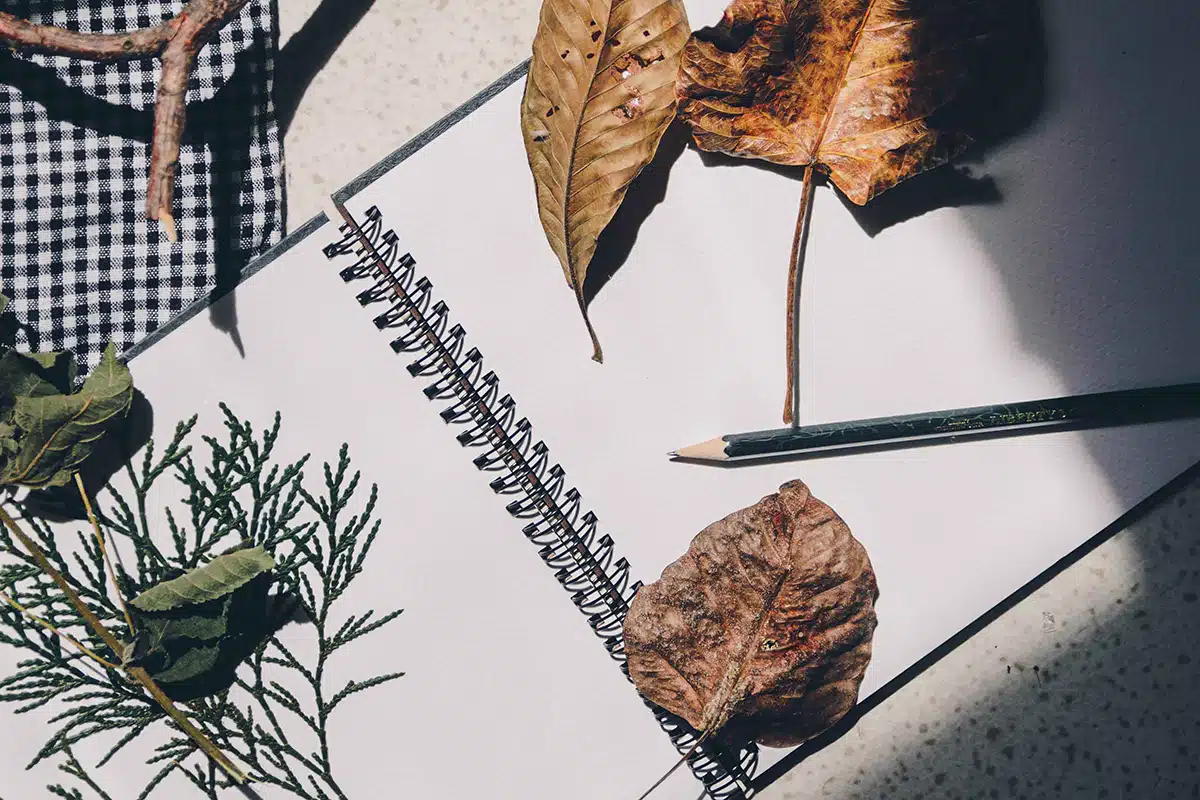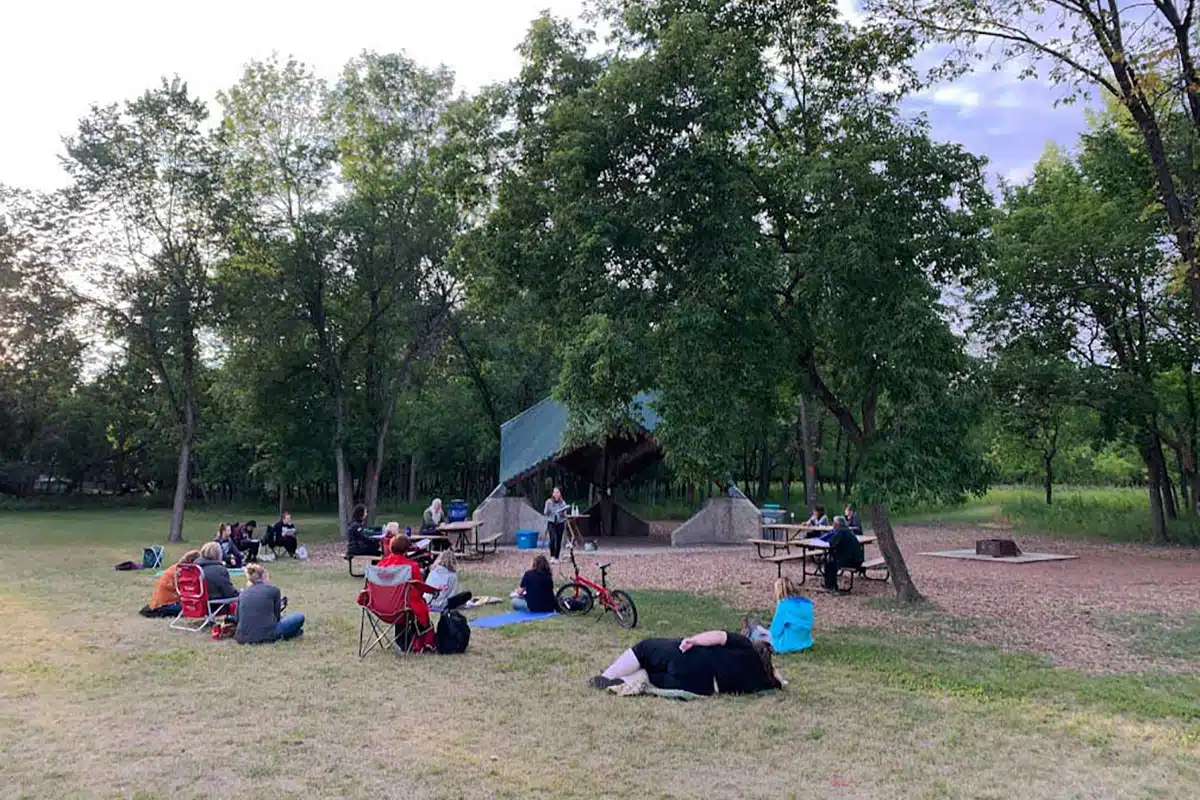
By Kaitlin Vitt, Digital Marketing and Outreach Coordinator
You’ve raked thousands of leaves, but can you draw what one looks like from memory?
You take nature breaks during the day, letting the chirping birds ease your stress, but can you name the birds?
You’ve walked around your block hundreds of times, but can you name each plant you see along the way?
These are just some of the questions we thought about at our nature journaling workshop, part of the CPAWS Manitoba Nature Club, August 12, 2021, at Assiniboine Park.
Why You Should Start a Nature Journal
It’s not uncommon to feel disconnected from the natural world, to go about your day forgetting to appreciate its wonders or taking for granted its gifts.
Nature journaling is documenting in a notebook what you experience in nature. This can be through drawing, writing, or both.
By observing, recording, and reflecting on life around you, you develop a deeper connection with the outdoors, offering a better understanding of the world we live in.

Riley Chervinski led a group of people through a nature journaling workshop at Assiniboine Park in August 2021.
Riley Chervinski, communications and events coordinator at CPAWS Manitoba and an avid journaler, led a group of 14 people, gathered on a warm August evening at Assiniboine Park, through exercises aimed at helping them discover their own way of connecting with nature through journaling. Riley shared examples of how nature journaling has helped her record her travels, special occasions, and even day-to-day life.
Some people in attendance said they turned to nature journaling at the start of the pandemic as a way to relieve stress and to live in the moment rather than letting their mind spiral.
Studies have shown being in nature supports mental health and well-being. For example, scientists have found natural sounds can have wide-ranging positive effects. Even listening to recorded nature sounds or nature sounds in urban parks where traffic noise is present does the trick!
How to Start Your Nature Journaling Journey
You don’t have to be an artist to keep a nature journal; you don’t have to be a writer, either. Some people lean more toward visually recording their observations, while others stick to words. You can do what you feel like in the moment!
All you need is a notebook, something to write/draw with, and a curious mind.
You don’t have to do all your nature journaling while you’re out in nature. You can make rough notes or sketches that you can develop further while at home.
Here are a few exercises to get you started with nature journaling:

A sound map is a way to notice and record the noises around you.
- Observe as a tourist would. When you’re in nature, imagine it’s your first time in this area. Note two or three incredible things a tourist would notice.
- Find a sit spot, a place in nature you visit regularly. Each time you go, record the following: something you saw, something you heard, something you smelled, something you felt. You can divide your page into a quadrant to answer these questions.
- Make a sound map. In the middle of the page, draw an ear, your face, a circle, or some other object to represent where you are at the moment. Observe what sounds you hear and from what direction. Draw a line from the centre of the page toward the direction you hear the sound, and write or draw what you hear. Draw sounds close by with shorter lines and sounds far away with longer lines.
- Let your mind wander. Notice what’s around you, and see if any questions come to mind. Research is all part of the fun with nature journaling! See a cool plant but not sure what it is? Take a photo, write notes, or draw it so you can look it up later. Witness a wasp that appears to be stinging a tree? Record that observation, and do some research at home. (It’s likely a gall wasp that’s not stinging the tree but rather laying its eggs.)
Click here to download the nature journal workbook Riley handed out to workshop participants!
Outdoor Ethics and Safety
Before you head out on your nature journeying adventure — at a park, your backyard, or otherwise — keep these guidelines in mind:
- Do not feed wildlife.
- Dispose of waste properly.
- Leave areas, objects, and plants as you found them.
- Respect plant and animal life.
- Stay on official trails.
- Beware of poisonous plants and stinging insects.

Participants received nature journals to fill out and take home with them to start them on their journaling journey.
About the CPAWS Manitoba Nature Club
This workshop was part of the CPAWS Manitoba Nature Club, which has three main components: Outdoor Learning (workshops fall under this), Outdoor Fun, and Speaker Series.
Our Nature Club is designed to help Manitobans get outside, make new friends, and learn about the wonders of nature.
Click here for the full Nature Club event listings.
This program is possible thanks to the generous support of The Winnipeg Foundation and the Conservation Trust, a Manitoba Climate and Green Plan Initiative delivered by the Manitoba Habitat Heritage Corporation.
